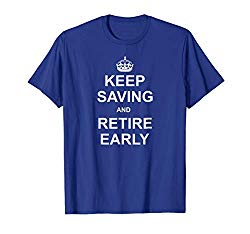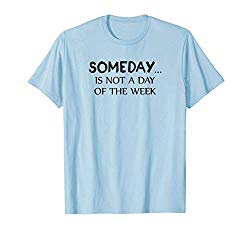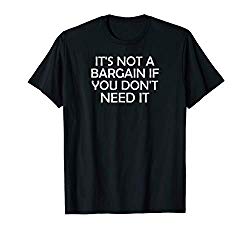U.S. Government Data – American Workers Have More Spending Power Than Five Years Ago
Recently I came across a late 2024 update from the U.S. Department of the Treasury about the median purchasing power of the American worker. It flies in the face of everything most of us have been hearing in the media and finance spaces, so I thought it worthy of a post.
Improvement
Right up front they present their data-backed conclusion – In the year ending in the third quarter of 2024, the median American worker could afford the same goods and services as they did in 2019, plus an additional $1,600 to spend or save per year.
Here’s the rest of the report:
In the third quarter of 2024, median weekly real earnings—that is, earnings that have been adjusted for inflation—rose by 0.8 percent, or 3.3 percent at an annual rate, according to the Bureau of Labor Statistics. The solid increase continues to reflect an improvement in the purchasing power for the median worker.
We incorporated the latest earnings data, along with consumer price data through the third quarter, into the analysis of our December 2023 blog post on the purchasing power of American households. The new data shows that income continues to rise more than prices since before the pandemic—the typical middle-class worker has seen their real weekly earnings rise 2.8 percent since 2019 and 1.2 percent from a year before.[1] Comparing the increase in median earnings with the change in the price of the typical consumer basket since 2019, we find that in the year ending in the third quarter of 2024, the median American worker could afford the same goods and services as they did in 2019, plus an additional $1,600 to spend or save per year.
What Gives?
Anyone who consumes news or media knows that the prevailing narrative out there is the exact opposite of this.
“Inflation is rampant”
“Wages are stagnant”
“The middle class can’t keep up”
That’s what I hear at least, all the time.
But the Treasury Department data (which includes BLS data) says otherwise. And before you go where you wanna go take note that this is a report from the last administration.
Survey Says…
Meanwhile the Yahoo Finance/Marist Poll 2025 national survey on the state of savings was released right after that and that actually disagrees. Although it’s a survey and not official government data, and a relatively small survey at that. Either way here are the key findings.
-
Only 22% of respondents report being very or completely satisfied with their savings, while 35% are very or completely dissatisfied. Forty percent of women are very or completely dissatisfied with their savings, compared to 28% of men.
-
Nearly half (48%) of respondents saved less in 2024 compared to the previous year, with only 21% saving more.
-
Nearly half (47%) of respondents cite the cost of living as their biggest obstacle to saving.
-
One-third (33%) of respondents couldn’t cover bills for even one month if they lost their income.
-
44% of respondents believe they will save more in 2025, with optimism highest among Gen Z (63%) and millennials (53%).
-
60% of respondents say they are more optimistic about their finances for the coming year with Donald Trump as president. This optimism crosses generational lines, with Gen Z (70%) as the most optimistic.
Another takeaway from the survey – “Only one-quarter of Americans say they live comfortably”. At first read on that one I thought “bullshit!”. But then I was interpreting “comfortably” as heat, AC, a nice bed and all the creature comforts that most Americans enjoy and that keep going up over time (your new washing machine has bluetooth and you have a pet name for your robot vacuum cleaner, you’ve been seen).
But they were defining living comfortably as being able to meet expenses.
After all we have a Comfort Crisis in America (<–affiliate link), and it’s because we have too much comfort. But again, different context.
The Wrong Guy
So we have official U.S. Government data from a 5 year period saying purchasing power has gotten much better for the median American worker. And we have a survey and a general perception in media and across society that we’re all gonna be living in tents on the street within a year or two.
In the end I’m the wrong guy to say what reality is, but I have a hunch. At the risk of sounding like an arrogant piss-ant, I have a lot of money and don’t think about it too much. Financial independence from a life of frugality and investing has done me quite well.
I don’t look at receipts when buying groceries, and rarely look at prices. Although the $5.35 price of eggs at Aldi a few days back got an eyebrow raise out of me.
I still bought a few dozen.
I personally think the government data and report paint a more accurate picture of things in general because I think people just spend too much money on things they don’t need and then complain that they don’t have enough money.
What say you? My audience is much smaller than in the heyday of FIRE blogs, but I’d like to think those who are still around are the best and brightest!
*Achtung Baby* – This is an economic issue not a political one, so as a reminder, Accidental FIRE is a politics-free zone, any overtly political comments will be edited or deleted.











































Hi Dave. I am the best and brightest and I completely agree with you. And I think you do consider prices, I just think it’s so ingrained that you’re not conscious of it most of the time. Just the fact that you shop at Aldi says it all – you are price/value conscious. And as a result, you have money to spare.
Good point about me considering prices, never thought of it that way. I guess the nuance of that is that once I saw how stupidly cheap Aldi is in general I committed to doing most of my shopping there and I then just stopped looking at prices when I’m at Aldi, for the most part. I just assume I’m getting a better deal, or at least on par with other stores.
I would absolutely agree that people have a spending problem and just want to blame other factors on why they can’t get ahead. I’ve seen wages inflate across the board quite a bit in the last 5 years. People just find a way to continue upgrading their lifestyle.
The endless upgrades of modern life… so many folks who claim they can’t get buy have all these modern accoutrements that only 20 years ago we couldn’t have dreamed of. And none of them are essential to live a happy life.
“I personally think the government data and report paint a more accurate picture of things in general because I think people just spend too much money on things they don’t need and then complain that they don’t have enough money.” I could not agree more. I also agree 100% with the comments from Andrew and Danger.
Frugality becomes such a habit that when faced with higher prices the impact is nill. I learned frugality out of necessity and have continued the practice for 30 years. It’s a mindset. One can make the proverbial lemonade or live a sour life, all puckered up and mad at the world for handing them the lemons. It’s a choice not a life sentence.
“It’s a mindset”… that says it all Tracy, so so true. Thanks for stopping by!
I agree. I’m always amazed at what my friends spend money and then lament how they are not sure when they will be able to retire. It’s rather sad. Makes me glad I grew up poor and learned from my mother how to stretch a dollar. And more glad I passed that on to my 3 girls! Life is easier when not caught in the spending trap.
My Mom passed a lot or most of my frugality to me as well since she managed the money in our house when I grew up. I now see what she dealt with and the amounts she had to make last and all I can say is that she worked magic. Thanks for stopping by Josie!
If anything, these data (is that how we say it? trying to sound smart here) are an indicator of the success of our marketing sector. Good job marketing! Convinced people with lots of stuff to still feel scarcity and thus deepen the desire for more stuff.
Less tongue in cheek, I wonder how disparity plays a part in this. While our poor people live relatively better than other countries poor people (looking at you, North Korea), they are surrounded by a greater extreme of consumption which to compare themselves to. Wonder what the distribution looks like; whilst the median should be a better indicator than the mean, it could still be dragged down if the shape is lopsided. I still think most of what you and the above commenters say are spot on, but this could be a contributing factor. Multivariate, nuances, blah blah blah. You know the deal.
Cool article man. I keep coming back for your unique stuff; it’s always interesting.
Advertising/marketing are clearly some of the most successful endeavors in modern society and seem to perform Jedi-mind tricks on the public, convincing them to part with their money in absurd ways. And great point about disparity and median vs mean, as you know I love to dig into the numbers. The poorer in America are exposed to more examples of the opposite extreme, esp in TV and popular culture. As are the middle class. And I think much of the noise and lamenting from the middle class that we hear is because of this – they only complain about the wealth they see and why they don’t have it, while all the while not realizing how comparatively great they live as compared to most in the world.
Is it surprising that people are financial illiterate? Not really. The US economy was the envy of the world over the last 5 years. It’s all downhill from here. If you think life was hard, it’s about to get a lot harder.
I agree that people are financially illiterate, and the US economy – minus some short/specific periods – has been the envy of the world for well over a hundred years. We can agree to disagree about the future, I have full confidence in the American worker and the American work ethic. I do, however admit that AI is a crazy wild-card that could change everything and is possibly already starting to do that. Cheers Joe!